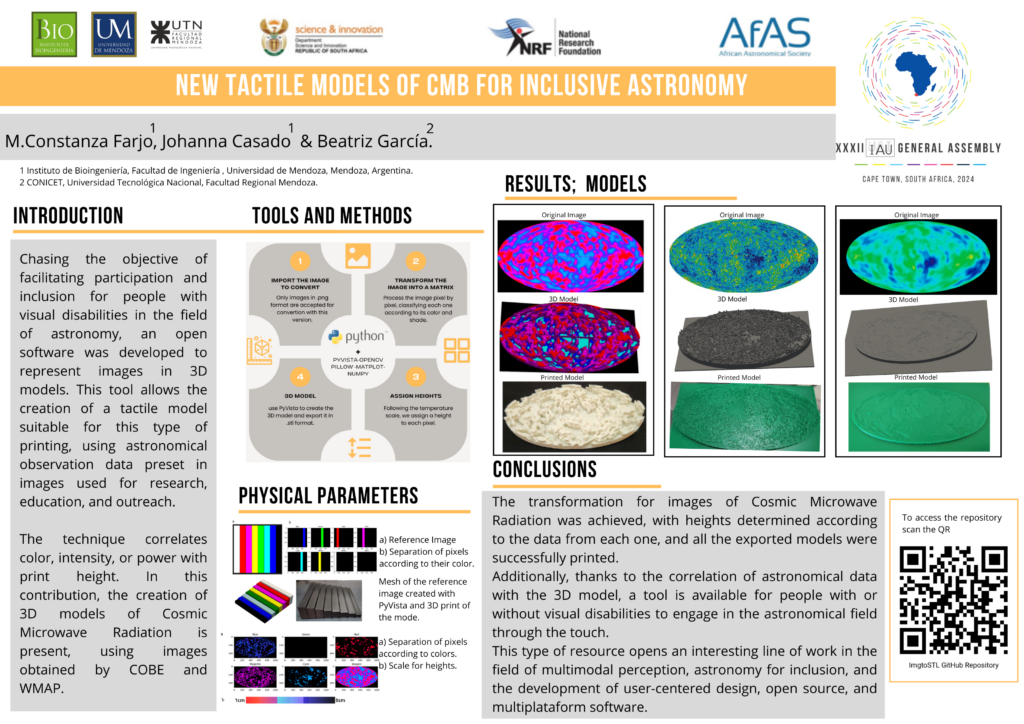Miss Constanza Farjo1, Dr. Johanna Casado1, Dr. Beatriz García2
1 Universidad de Mendoza. 2 Universidad Tecnológica Nacional, Regional Mendoza
Even when radiation comes from energy regions beyond the visible spectrum, Astronomy is mainly a branch of science based on the visual approach to celestial phenomena. This fact, the observation based on the perception of light, is a significant disadvantage for individuals with visual impairments or other styles of learning. One of the tools that facilitates participation or aims to achieve this goal is sonification; another is tactile modeling, allowing individuals in general to touch and explore replicas of celestial objects and other astronomical data such as spectra or light curves in a new way. Tactile models of astronomical images can be enhanced through the development of open-source code, offering benefits such as a freely usable, collaborative, and inclusive tool. With this new approach to representing images in 3D models and the use of libraries like PyVista, models can be exported to STL for printing. This would enable the creation of a tactile model suitable for 3D printing using data from astronomical observation present in images used for research, education, and outreach, and correlate color, intensity, or power with the height of printing. In this contribution, we will focus on the 3D creation of the Cosmic Microwave Radiation, using the COBE and WMAP images and the experience of using these tactile models in a framework of focus groups with able and disabled participants, specialists, and non-specalists.

Let us know your comments!